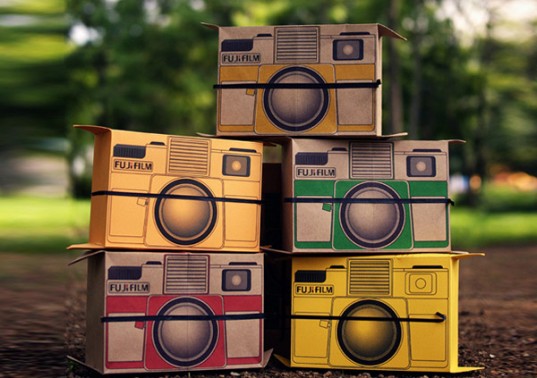Cardboard Pinhole Camera Pdf Free Download Programs
Modification Make a simpler version of the solar eclipse viewer with two thin but stiff pieces of white cardboard. Punch a small, clean pinhole in one piece of cardboard and let the sunlight fall through that hole onto the second piece of cardboard, which serves as a screen, held below it. An inverted image of the sun is formed.
To make the image larger, move the screen farther from the pinhole. To make the image brighter, move the screen closer to the pinhole. Do not make the pinhole wide or you will only have a shaft of sunlight rather than an image of the crescent sun.
Remember, this instrument is used with your back to the sun. The sunlight passes over your shoulder, through the pinhole, and forms an image on the cardboard screen beneath it. Do not look through the pinhole at the sun. Introduce s and related vocabulary. Display the diagram of a solar eclipse.
Learn how to make your very own pinhole camera to safely see a solar eclipse in action! DOWNLOAD PDF. Download from Wow! As a pinhole camera, it functions as an ideal transition from the previous chapter. That a cardboard camera would have.
Ask students to analyze the diagram and describe what happens during a solar eclipse in their own words. Explain that a solar eclipse occurs when the moon is in a position directly between the Earth and the sun. On Earth, we see the moon's shadow (the ), which fully blocks the sun. The sun’s, or halo, is visible during those few minutes that the sun's bright light is totally obscured by the moon. When the sun is only partially blocked by the moon's shadow (the ), a portion of the sun's disk is visible. We are able to view the, the outer layer of the sun.
Show students the video clip from National Geographic Channel’s “Staring at the Sun.” Watch the video clip. Then check students’ comprehension. Ask: • Why is Earth the only planet in the solar system that experiences total solar eclipses?
(The ratio of size and distance between the sun and Earth creates a perfect situation where the moon completely blocks out the solar surface.) • What is? Born to fight full movie in hindi free download. What’s the maximum amount of time totality lasts? (Totality is the period when the sun, moon, and Earth come into perfect alignment. It never lasts for more than 8 minutes.) • What is the sun’s corona? (the sun’s outer ) • What is the sun’s?
(the bright, everyday surface of the sun) 3. Introduce the hands-on activity and discuss safety precautions. Draw an image of the sun that is 40 centimeters (15.7 inches) in on the board. Have students cover or close one eye and hold up their thumbs very close to their faces as they look toward the sun image. Have them move their thumbs slightly left or right to try to block the image. Explain that this demonstrates an eclipse if their heads were the Earth and their thumbs were our moon.

Tell students that they are going to investigate solar activity and build a viewer to allow them to observe a solar eclipse. One safe way of viewing the sun during a partial eclipse, or anytime, is a pinhole camera, which allows users to view a projected image of the sun.
Remind students to never look directly at the sun, even during a total solar eclipse. Partial eclipses, annular eclipses, and the partial phases of total eclipses are never safe to watch without taking special precautions. Even when 99% of the sun’s surface is obscured during the partial phases of a total eclipse, the remaining crescent is intensely bright and cannot be viewed safely without eye protection. Looking directly at the sun can quickly result in permanent eye damage or blindness.
Have students assemble their solar eclipse viewers. Divide students into small groups. Distribute one copy of the handout Build a Solar Eclipse Viewer to each group. Allow groups enough time to assemble their viewers. Have students go outdoors and use their viewers. Check to make sure groups built their viewers correctly.
